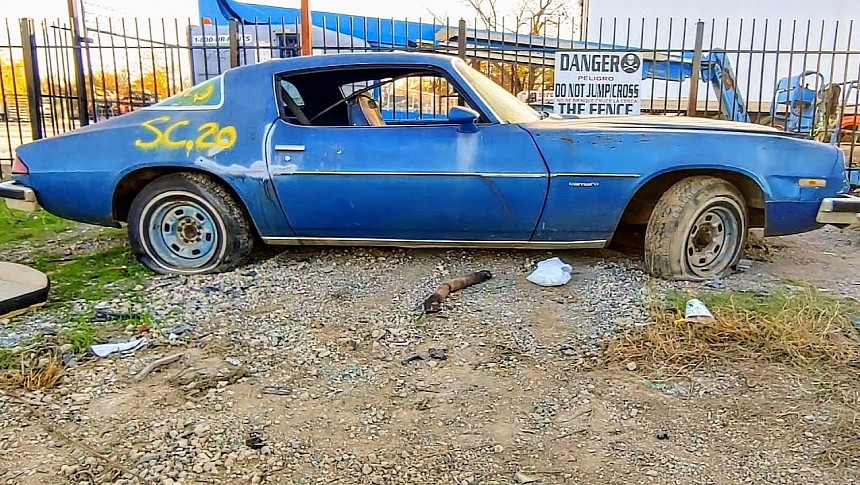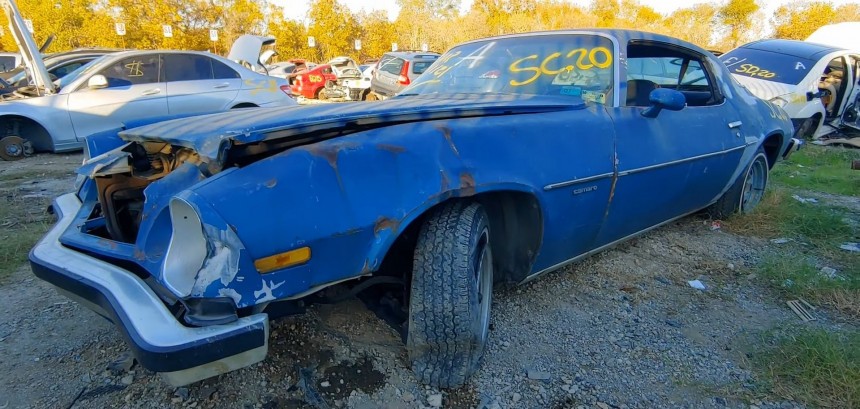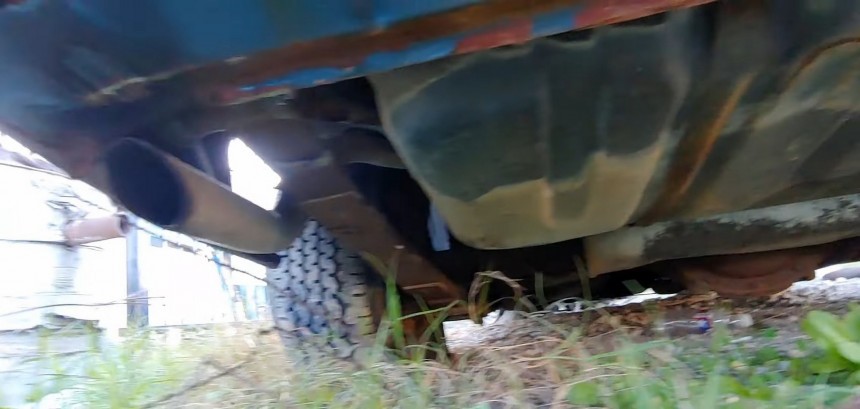The second-generation Camaro erupted in 1970 and stayed around long enough to see the demise of its next-of-kin pony cars and the rise of Japanese and European imports. Gradually, the competition diluted until virtually no one else was left to run against. Despite its rough birth – at one point, GM brass seriously considered ditching the nameplate following the massive walkouts from 1969 and 1970 – Chevy’s iconic pony soldiered on to its best-ever achievements.
The Malaise Camaro gained momentum and reached sales volumes never equaled before or since by any of the other generations of the model. Today, many examples are highly prized pieces of Detroit history. In contrast, others shed their anonymity in junkyards, rotting in wait for the redemption of the crusher.
In 1975, at the peak of the energy crunch, Chevrolet was sleeping on its Camaro laurels, for it was the only true pony car still in production. The previous year was a mortuary parade for many performance-veiled models, and carmakers shifted focus elsewhere. The archrival Mustang was living its sub-compact afterlife on the underpinnings of the Pinto. At the same time, the Challenger and Barracuda had the Mopar banner held at half-mast in their memory. AMC’s final assault had ended with its Javelin hurled into history forever.
The Camaro had taken the blow of the Malaise head-on and adapted to survive at all costs. With engines more inclined toward fuel efficiency and environmentalism than making tire companies exuberantly worried about how to fulfill demand. The sales literature from 1975 openly admitted the tidal wave of change: ‘You’re driving more slowly now, and perhaps you’re driving less. (…) Thanks to Chevrolet’s new Efficiency System, the 1975 Camaro is designed to run leaner (more economically), run cleaner (meet new emission standards), and save you money every mile.’
To that extent, the car that delivered those promises was a toned-down, muzzled shadow version of what it used to stand for when it first appeared in 1967. And yet, the production had been on an ascending curve every year (with a modest recess in 1975), and the best was yet to come. During the 12-year-long generation, the Camaro sold nearly 1.8 million cars.
1975 marked the absence of the Z/28 package for the second year in a row – the option would be reintroduced in 1977 – and sales dropped to almost 146,000, down some 5,000 from the previous production effort of 1974. With two engines available – a six-cylinder, money-saving 250-cubic-inch (4.1 liters) and a 350-incher V8 (5.7 liters), there wasn’t much anticipation for fun, speed, or muscle.
The base variant of the ’75 Camaro was the Sport Coupe. The step-up came in the form of the Type LT (Luxury Touring) – the latter only got the V8 motor and could be optioned with a four-speed. However, the TYPE LT was a full 500 bucks over the base Sport Coupe I6 and over 300 dollars more expensive than the V8 variant.
That’s why the Sport Coupe made the bulk of production for 1975, and that’s why it’s so easy to find an abandoned example in junkyards across the States. Take this derelict one in the video below – a perfect incarnation of what twenty years of retirement can do to a car.
This blue Chevy was born red (the interior shows the original color) and with an inline-six (one of nearly 30,000 Camaros from 1975) coupled with a Turbo Hydra-matic automatic tranny. It last saw road action in 2001 and didn’t get much love after that. On the good side, it’s not a rust victim, and the body looks straight (with the obvious exception of the front clip). If no one will save it soon, it’s heading for the crusher – a fate so many of its siblings have met before.
In 1975, at the peak of the energy crunch, Chevrolet was sleeping on its Camaro laurels, for it was the only true pony car still in production. The previous year was a mortuary parade for many performance-veiled models, and carmakers shifted focus elsewhere. The archrival Mustang was living its sub-compact afterlife on the underpinnings of the Pinto. At the same time, the Challenger and Barracuda had the Mopar banner held at half-mast in their memory. AMC’s final assault had ended with its Javelin hurled into history forever.
The Camaro had taken the blow of the Malaise head-on and adapted to survive at all costs. With engines more inclined toward fuel efficiency and environmentalism than making tire companies exuberantly worried about how to fulfill demand. The sales literature from 1975 openly admitted the tidal wave of change: ‘You’re driving more slowly now, and perhaps you’re driving less. (…) Thanks to Chevrolet’s new Efficiency System, the 1975 Camaro is designed to run leaner (more economically), run cleaner (meet new emission standards), and save you money every mile.’
1975 marked the absence of the Z/28 package for the second year in a row – the option would be reintroduced in 1977 – and sales dropped to almost 146,000, down some 5,000 from the previous production effort of 1974. With two engines available – a six-cylinder, money-saving 250-cubic-inch (4.1 liters) and a 350-incher V8 (5.7 liters), there wasn’t much anticipation for fun, speed, or muscle.
The base variant of the ’75 Camaro was the Sport Coupe. The step-up came in the form of the Type LT (Luxury Touring) – the latter only got the V8 motor and could be optioned with a four-speed. However, the TYPE LT was a full 500 bucks over the base Sport Coupe I6 and over 300 dollars more expensive than the V8 variant.
This blue Chevy was born red (the interior shows the original color) and with an inline-six (one of nearly 30,000 Camaros from 1975) coupled with a Turbo Hydra-matic automatic tranny. It last saw road action in 2001 and didn’t get much love after that. On the good side, it’s not a rust victim, and the body looks straight (with the obvious exception of the front clip). If no one will save it soon, it’s heading for the crusher – a fate so many of its siblings have met before.



























































